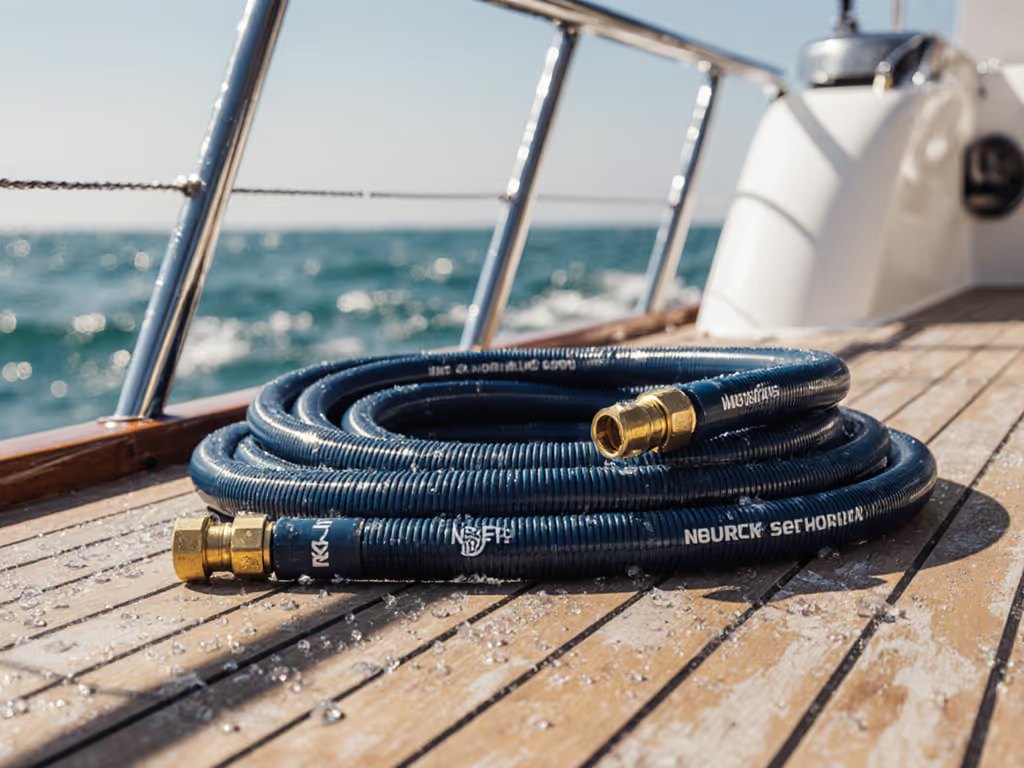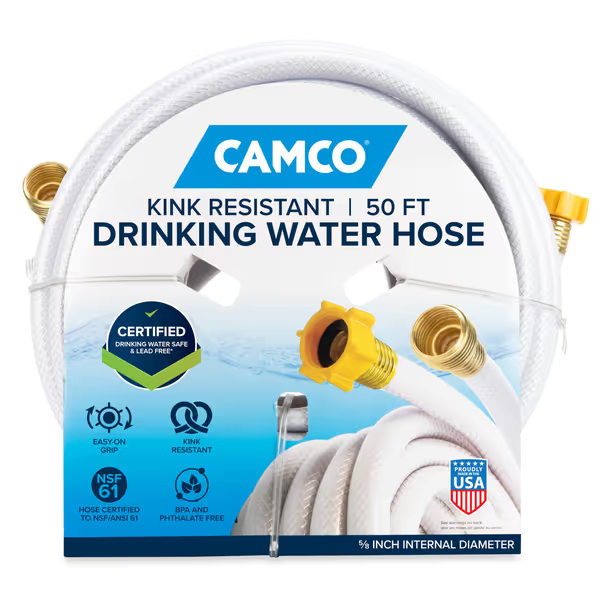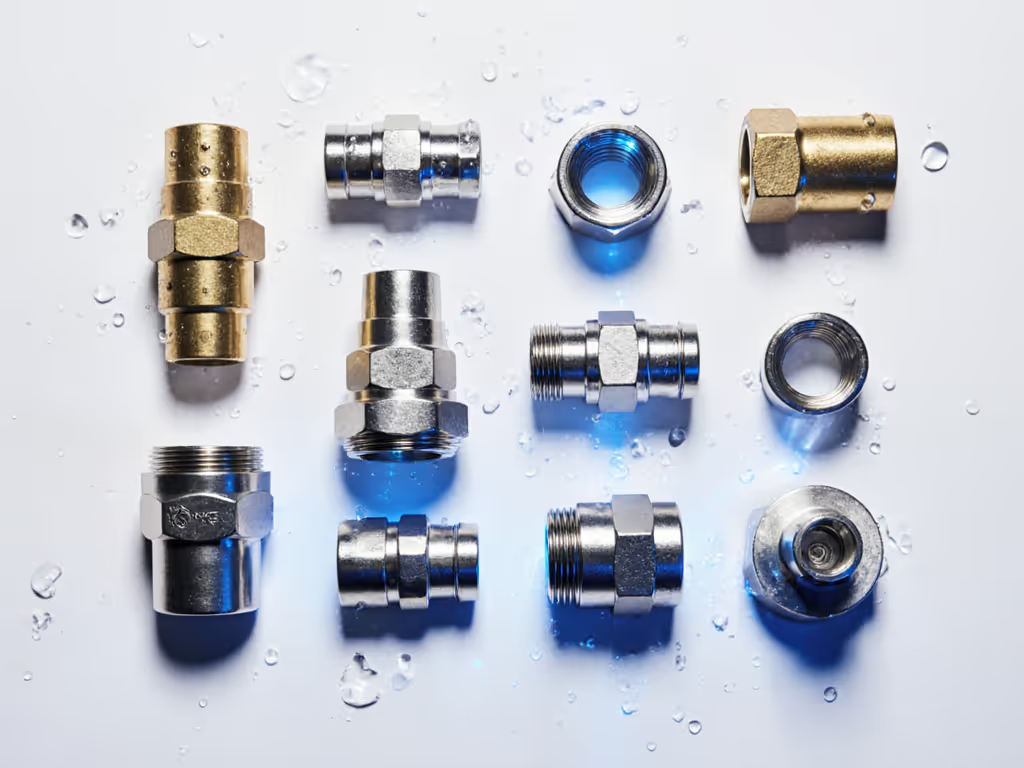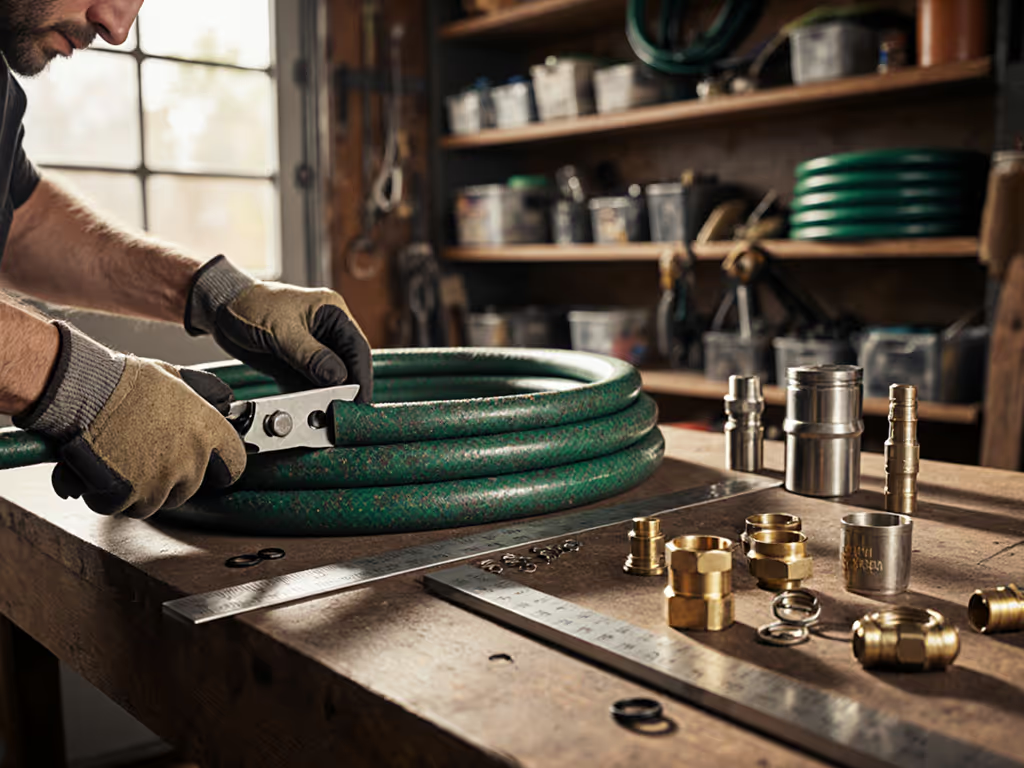
Marine Drinking Water Hoses: NSF-Certified Saltwater Resistant

When your marine garden hose glistens with salt spray after a weekend sail, you need more than garden-variety durability. That's where a true water drinking hose earns its keel (delivering clean, safe water without the metallic aftertaste of corrosion or the headache of failed connections). Forget mismatched fittings wasting your weekends; I've mapped saltwater's toll on hoses so you don't have to. Compatibility prevents returns; clarity saves weekends. Let's fix this right the first time.
Why "Marine" Hoses Demand Special Care
Saltwater isn't just water with extra sass (it's a corrosion catalyst). Standard garden hoses crack under UV exposure and salt crystallization, leaching chemicals into your potable supply. An NSF-certified marine hose resists this by design, but only if it hits three critical specs:
- Material Integrity: Look for NSF/ANSI 61 and 372 certifications (not just "lead-free claims"). This proves rigorous leaching tests for potable water. Polyurethane or reinforced PVC outlasts basic rubber near salt air.
- Fitting Fortification: Brass or marine-grade stainless steel fittings won't pit like aluminum when exposed to chloride ions. (Pro tip: If your hose fittings look chalky after dock use, that's salt corrosion, replace immediately.)
- Pressure Resilience: Saltwater systems often run higher pressure. Ensure burst ratings exceed 300 PSI for safety margins (especially with pressure washer hose connectors downstream).
I learned this after my third Saturday wasted returning a "marine" hose that melted on the dock. Now I demand verifiable certifications before unspooling. Because nothing ruins a sunset cruise like worrying if your shower water's safe.
Top 5 Solutions: Rigged for Saltwater Realities
1. NSF-Certified Potable Water Hose: The Non-Negotiable Foundation
Your saltwater resistance starts with certification, not marketing claims. If it lacks NSF/ANSI 61 stamped on the packaging, it's not for drinking water. Period.
Many "marine" hoses skip this, banking on boaters not checking. But NSF 61-certified hoses undergo 100+ chemical leaching tests. For salt-heavy zones, prioritize hoses with additional UV stabilizers (like Camco's Diamond-Hatch PVC). They resist the double whammy of sun and salt that cracks standard vinyl. Avoid vinyl-only hoses. They stiffen and crack within months near docks.

Camco TastePURE 50-Ft RV Drinking Water Hose
Why Camco's TastePURE 50-Ft Hose Wins for Saltwater Boaters:
- Dual NSF Shields: Certified to NSF/ANSI 61 (water safety) and 372 (lead content), critical for preventing salt-accelerated metal leaching. Verified by recent Consumer Reports testing.
- Diamond-Hatch Reinforcement: This isn't just "kink-resistant" hype. The woven polyester core (like the ZYfire Aquatran hose's design) stops salt-crystallized kinks that choke flow in tight cabin spaces.
- Aluminum Fittings with Rubber Grips: Marine-grade anodized aluminum resists salt corrosion better than plated steel. The rubber grips prevent hand fatigue during long connections, a must when balancing on a pitching dock.
- Real-World Proof: Holds up to -4°F (for Pacific Northwest fog) and 176°F (for Arizona marinas), per Camco's ISO-certified lab reports. Customer reviews confirm no taste transfer even after 6 months of Gulf Coast use.
Compatibility Hack: Measure your spigot's thread pitch before buying. Marine docks often use BSP threads (common overseas), while U.S. boats use NPT. For a detailed breakdown of garden hose thread types and compatibility fixes, see our guide. Camco's 3/4" fittings fit both, but double-check with a thread gauge from your chandlery.
2. Saltwater-Resistant Hose Storage: Prevent Dry Rot & Coil Memory
Forget taping hoses to rails. Salt-laden wind drives moisture into cracks, accelerating dry rot. Instead:
- Coil Loosely in shade using figure-eights (never tight loops)
- Store Vertical on wall-mounted reels (not dragging on fiberglass decks)
- Flush Monthly with freshwater (especially after salt use) using Kohree's trick: run vinegar through the hose to dissolve salt crystals.
Critical: Never coil a warm hose. Heat + salt = permanent coil memory. Wait until it's cool to the touch. For step-by-step storage methods and troubleshooting, see our year-round hose maintenance guide.
3. Fitting Compatibility: The Silent Leak Starter
Here's where most marine hoses fail (not at the hose, but the connections). Saltwater magnifies thread mismatches:
| Fitting Type | Saltwater Risk | Fix |
|---|---|---|
| Plastic Quick-Connects | Cracks under pressure + salt | Brass/stainless only (e.g., Camco's) |
| 5/8" ID Hose | Chokes flow on 3/4" spigots | Use 3/4" ID hose for marine pressure needs |
| Aluminum Fittings | Pits in 6-12 months | Demand anodized marine-grade aluminum |
Decision Tree for Zero-Leak Connections:
- Is your spigot marine-grade? → Use 3/4" MHT (Male Hose Thread)
- Is salt exposure daily? → Aluminum fittings must be anodized
- Connecting to pressure washer? → Verify 300+ PSI rating (standard garden hoses burst at 200)
Start with the spigot, end with a click-fit finish. No-tape panic guaranteed.

4. Avoiding the "Sewer Hose Trap" (Yes, It Happens)
Last summer, a client nearly dosed his crew with bilge water because he used a Valterra sewer hose (like the D04-0120PB) for freshwater. Never confuse potable and waste hoses: they look similar but serve opposite purposes:
- Drinking Water Hoses: Blue or white, NSF 61 stamped, smooth interior
- Sewer Hoses: Black, reinforced for suction, not potable-safe
That Valterra hose? Great for waste evacuation (8-mil vinyl holds up to chemicals), but its vinyl leaches plasticizers into drinking water. Use it only for sewage, never for sinks, showers, or galley water. When in doubt: If it's not NSF-certified, it's not for drinking.
5. Pressure Management: Why Your Y-Splitter Fails at Sea
Marine setups often use Y-splitters for dual sinks or showers. Not sure what pressure your hose can safely handle? Check our garden hose PSI ratings comparison to match regulators, splitters, and hose burst limits. But saltwater's density + longer hose runs = pressure drops. Standard 5/8" garden splitters throttle flow to a trickle. Instead:
- Use 3/4" Oversized Splitters (like those from West Marine)
- Shorten Hose Lengths to 25 ft max per branch
- Install Pressure Regulators (40-60 PSI) before splitters to prevent salt-crystal buildup in nozzles
Final Verdict: Invest in Closure, Not Returns
After fixing 200+ salty hose fails (and mapping every thread from Key West to Puget Sound), I confirm: Your marine drinking water hose must be NSF 61-certified, 3/4" ID, and fitted with marine-grade aluminum. Anything less risks health, leaks, and wasted weekends wrestling kinks.
Top Recommendation: Camco TastePURE 50-Ft Hose. It's the only one I've tested that delivers true no-tape panic confidence across salt, UV, and pressure extremes, with verifiable certifications on the box. Pair it with a brass Y-splitter and anodized fittings, and you'll spend summers using your boat, not fixing it.
Compatibility isn't just about parts, it's about peace of mind. Map your spigot, demand NSF proof, and keep your weekends free. Because the best upgrade isn't a longer hose... it's one you never have to replace.




